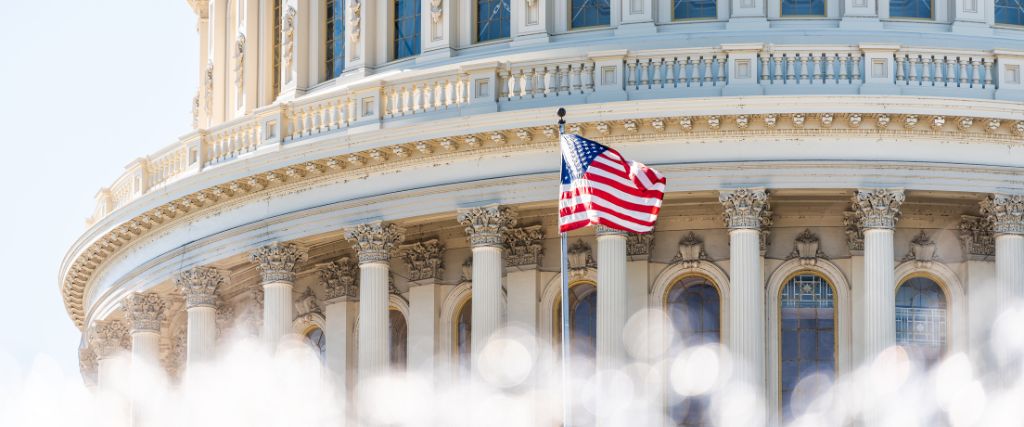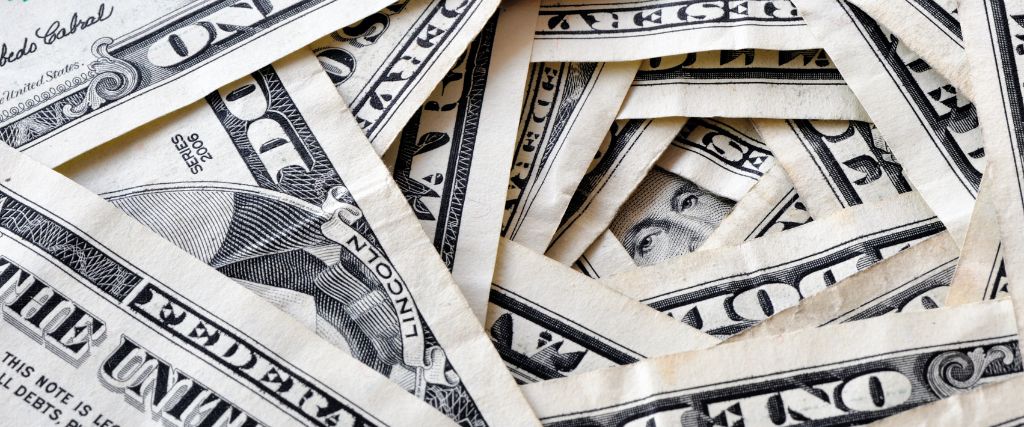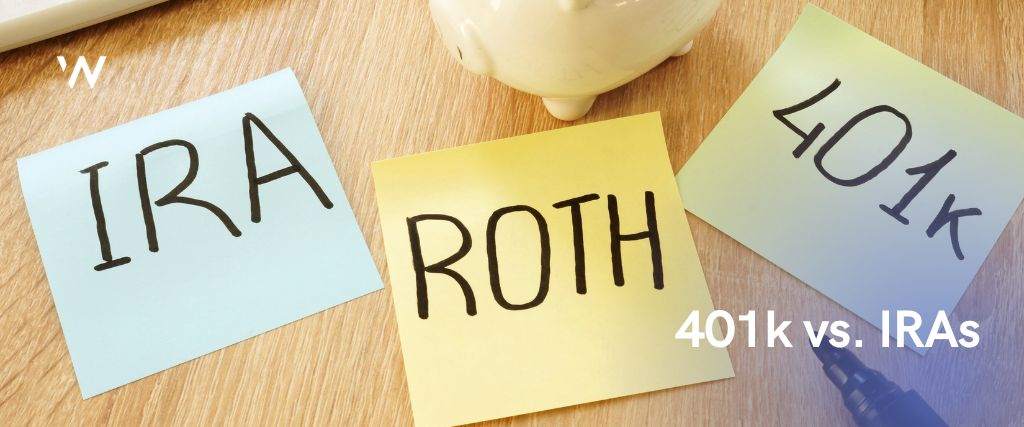The Debt Ceiling and How it Affects Individuals
You’ve probably been hearing some talk about the debt ceiling lately. The US Government has been in a heated politicized debate for weeks over whether to suspend the debt ceiling in order to set federal spending limits. Suspending the debt ceiling for a period of time would allow the government to borrow more money and continue to fund important programs and services for taxpayers. Alternatively, not doing so would force the US to default on its debt and, according to Treasury Secretary Janet Yellen, lead to economic disaster.
It sounds scary and, in theory, it is. Without going into all the potential catastrophes that may have occurred had the government not suspended the debt limit, it wouldn’t have been good. Of course, unlimited borrowing isn’t good either. In any case, the House this week saw a strong bipartisan coalition (314 in favor, 117 against) come together on a debt ceiling deal, voting to suspend the debt ceiling for two years and set federal spending limits.
It seemed like a never-ending political debate, more individual campaigning than national interest, and the overwhelming vote on the debt ceiling bill confirmed that. But the issue is still important and the U.S. debt is still a concern, even if we bought a few years of avoiding economic disaster with this vote. So, especially if you had never heard about a debt ceiling until the last few months, let’s look at the function it serves in our economy, how it affects individuals, and how we can all prepare for the future.

What is the Debt Ceiling?
The US debt ceiling is a financial legal limit placed on the amount of money that the federal government can borrow. It's typically set by Congress and approved by the President and serves as a safeguard from excessive borrowing by the government. The purpose of the debt limit is to ensure that funds are available only for essential programs and services deemed necessary by politicians.
When the government needs to borrow more money than what was allotted in the debt ceiling, Congress must vote to raise the debt limit so that more money can be borrowed. Technically, this does not automatically increase taxes or spending, but it does allow for the ability for both to occur if deemed necessary.
US Debt in 2023
The current US national debt stands at approximately $31.5 trillion, with annual deficits continuing to rise each year. This has caused concerns among many economists who fear that increasing debt could lead to increased inflation, higher interest rates, and a decrease in investments and savings for individuals.
If Congress fails to raise the debt limit when needed, it could result in a default on payments owed by the government – potentially causing serious economic ramifications, such as decreased access to capital markets, credit downgrades, and defaults on other types of obligations, like student loans or Social Security benefits.
Individuals can help prepare financially for potential scenarios involving a debt crisis by setting aside extra savings for an emergency fund or investing in low-risk securities like bonds or treasury bills. They should also stay informed of any changes in fiscal policies related to debt ceilings. As always, individuals should practice responsible budgeting habits, such as limiting spending on unnecessary items and paying off debts on time each month so they are better prepared financially if any negative consequences from a potential debt crisis arise.

Why Does the Government Borrow Money?
The US government borrows money to pay for things like roads, schools, and other important services. This money helps citizens by making sure we have the things we need in our lives. The government borrows from banks or individuals willing to lend them the money and then pays it back with interest over time. By borrowing the money, the government can make sure that everyone has access to essential services without having to raise taxes too drastically.
Raising the Debt Ceiling
Raising the debt ceiling in the US can be beneficial for both individuals and the government alike. It allows the government to borrow more money when necessary to fund essential services like roads and schools. Moreover, increased spending can lead to economic growth by providing jobs, boosting consumer confidence, and increasing tax revenues.
It also helps individuals by keeping interest rates low and enabling them to access credit more easily. Low interest rates make borrowing money more affordable for individuals, allowing them to buy homes, cars, or other big-ticket items that many people need in order to live comfortably and build wealth. Low interest rates also encourage businesses to invest in capital goods like equipment and technology that can boost productivity and create more jobs in the economy.

How the Debt Ceiling Affects Investors
Raising the debt limit increases access to capital markets for investors looking to buy bonds or treasury bills. This type of investing helps reduce risk while still earning returns over time, making it an attractive option for those looking to save for retirement or other long-term goals.
In this case, raising the debt ceiling will likely encourage economic growth by allowing the government and individual citizens to borrow money at low interest rates while still providing access to capital markets for investors. At the same time, the government can continue to fund essential services that are necessary for our society’s well-being.
Not Raising the Debt Ceiling
On the other hand, it is important to consider that raising the debt ceiling can also have negative consequences that could potentially outweigh these benefits. The most significant disadvantage of raising the debt limit is that it increases public debt, which has ballooned over recent years. This has led to concerns about our long-term fiscal sustainability as a nation.
If too much money is borrowed and not paid back, it could lead to a period of economic stagnation or recession. Additionally, high levels of public debt can put upward pressure on interest rates, making it costlier for businesses and consumers alike to borrow money and spend or invest in the economy.
The Political Impact
Raising the debt ceiling can make it more difficult for fiscal authorities to respond effectively in times of crisis. When there is already high public debt, governments may not be able to borrow any more funds during an emergency situation due to their borrowing limits. Rising public debt can also put strain on government budgets and lead to reduced spending on crucial services like healthcare and education.
Raising the US debt ceiling can also have serious political implications if done too frequently or without proper oversight by Congress. It could lead to accusations of government overspending or mismanagement of taxpayer money, which could hurt the credibility of current political leaders and their ability to make good fiscal decisions in the future.
While raising the US debt limit does have some advantages for both individuals and governments alike, it is important to weigh these benefits against potential negative consequences. If not done responsibly with sufficient oversight from Congress, raising the US debt ceiling could potentially put our economy at risk in both the short-term and long-term future.

How to Prepare for a Debt Crisis
1. Develop an emergency savings fund: Debt crisis or not, it's always important to start saving money as soon as you can. Try to build up your emergency funds – ideally three to six months’ worth of living expenses – so you have access to cash when needed.
2. Diversify your investments: Investing in multiple asset classes can help minimize the potential losses that could occur during a debt crisis, so be sure to diversify your portfolio with stocks, bonds, mutual funds, and other investments that can offer protection if one particular sector takes a downturn due to a debt crisis.
3. Pay down any existing debts: Before a recession or depression hits, it’s really helpful to have paid off any high-interest loans or credit cards you may have outstanding. This way, you’ll have more money available for essential needs in the event of an economic downturn.
4. Monitor your financial accounts regularly: Be sure to keep track of what is happening with all of your financial accounts and review them periodically so you are aware of any changes or discrepancies that might appear throughout the course of the crisis period.
5. Stay informed about current events: Keep up with news related to economic events like interest rate hikes or fluctuations in markets around the world. A lot of it is political hot air, but the heart of the issue is serious. Knowing what’s going on in the national economy can help you make better investment decisions as well.

Our Solution
One of the key takeaways from the debt ceiling crisis of the last few weeks is that the best way individuals can prepare is to create an accessible savings fund. This can be a parachute for a national debt crisis, but it’s just a good idea in general too. Savings accounts are a good option, but they offer very low interest rates. 401k accounts are great too, but that money isn’t accessible until retirement age.
One of the best ways to prepare an emergency fund that you can access whenever you need it is to invest in the stock market. But if you’re new to investing, you’re probably going to need some financial expertise to help you on your investing journey, especially if you want to build a diverse and rewarding portfolio. If you go to a bank for advice, they’re going to ask for an initial investment in the six figures, while most investing apps don’t offer any guidance at all.
That’s where Wizest comes in. We created an investing solution to democratize the stock market and remove some of the barriers to entry that discourage novice investors. We understand the stock market can be intimidating and overwhelming, and that most people’s lives are too busy to spend hours analyzing the market and making thoughtful investments.
Wizest lets you pick people instead of stocks. You can build your own team of financial experts by browsing their Expert Profiles and Portfolios like you would on a social media platform. Building your team takes just minutes, replicating the portfolios of Experts with one click after you check out their profiles. It’s like fantasy football for investing, and you can shuffle your team of Experts anytime!
Sign up for Wizest today to take advantage of our limited time Launch Pricing!
401k vs IRAs: Choosing the Right Savings Option...
2023-06-13
401k vs IRAs - Putting money in a savings account is great, but there are more efficient ways to rea...
Read moreA Beginner's Guide to Futures Trading: Strategies ...
2023-06-22
Futures trading gives investors access to various markets with just one contract instead of multiple...
Read moreMastering the Basics: Essential Investing Concepts...
2023-08-29
For young people, carving a secure financial future is daunting, especially when faced with economic...
Read more


